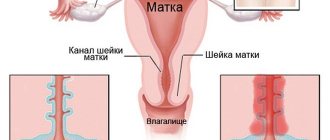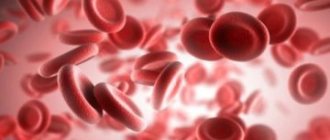Bronchial asthma is a chronic disease that primarily affects the respiratory tract. Characterized by altered bronchial reactivity. This disease is characterized by constant attacks of difficulty breathing, therefore, translated from Greek, asthma means “choking, heavy breathing.”
Among the likely causes of the disease, scientists name the poor environmental situation in the world, an increase in the amount of genetically modified products, as well as physical inactivity, which is especially common among the adult population of developed countries.
The main reasons for the development of the disease
Asthma in adults is a multifactorial disease. This means that there are many reasons for its development - both external and internal.
Among the internal causes of the disease are the following:
- Endocrine disorders
- Deviations in the respiratory system
- Weak immunity
External reasons include:
- Allergies of various origins
- Work in environmentally unfriendly enterprises
- Smoking
- Stress
Household allergens
These include household items such as dust, pollen, animal hair, mold, and chemical fumes from the surface of new furniture. All of these allergens, in addition to asthma, can trigger other chronic respiratory diseases.
Working conditions
This type of disease develops in adults under the influence of various materials used in the workplace on the body. According to statistics, 15% of all cases of exacerbation of asthma are caused by working conditions.
Genetic predisposition
About a third of all asthma sufferers begin to suffer from asthma in childhood. But having gotten rid of the pathology, it can strike again in adulthood. The risk of developing the disease in this case increases the influence of the environment and genetic factors.
Prices
| Name of service (price list incomplete) | Price |
| Appointment (examination, consultation) with a pulmonologist, primary, therapeutic and diagnostic, outpatient | 1750 rub. |
| Consultation with a candidate of medical sciences | 2500 rub. |
| Professor consultation | 4300 rub. |
| Consultation (interpretation) with analyzes from third parties | 2250 rub. |
| Prescription of treatment regimen (for up to 1 month) | 1800 rub. |
| Study of external respiratory function (RPF) with drug tests | 1800 rub. |
| X-ray of the chest organs (survey) | 1900 rub. |
| X-ray of the chest organs in 2 projections | 2900 rub. |
Symptoms of bronchial asthma
Choking and shortness of breath . It can occur during physical exertion, as well as in a completely calm state, when inhaling air with dangerous impurities. Choking or shortness of breath occurs unexpectedly as an attack.
Cough. It occurs simultaneously with shortness of breath and is non-productive. Only at the end of the attack is it possible to release a small amount of sputum.
Shallow breathing . An asthma attack is accompanied by frequent shallow breathing and the inability to take a deep breath.
Wheezing . They accompany a person’s breathing during an attack and are sometimes heard even remotely.
Orthopnea pose . This is the position that a person reflexively takes during an attack - sitting, dangling his legs, tightly grasping a chair, bed or other object with his hands. This pose promotes deeper exhalation.
Also, as the disease develops, changes in the body may occur such as general weakness, bluish skin, difficulty breathing, shortness of breath, dry cough, rapid heartbeat, dizziness and headache, and susceptibility to various diseases.
Fluorography Results - What the Most Common Mean: 51 comments
I underwent fluorography and it was written: in the hilar zones there is an increase in the pulmonary pattern due to minor peribronchitic perivascular changes (more on the right); no focal infiltrative changes were detected in the lung tissue; the roots of the lungs are structural, expanded, stringy; cons are free; the heart shadow is within the age norm. What does this mean? I went to do it because there was a pull on my left arm, shoulder, under the shoulder blade. And now I have a slight cough and a slight pain on the left side when I take a very deep breath.
Irina, chest pain is not associated with pulmonary results. The results are similar to incipient bronchitis or simply some reactions in the bronchi from the cold.
Please tell me what the conclusion means: “There is inflammatory infiltration in the projection of the tail.” I've been smoking for 15 years now
Help me decipher my husband’s fluorography. The root of the left lung is expanded due to enlarged intrathoracic lymph nodes, pronouncedly branched, pulled upward. Recommended TMG of the left lung through the root, consultation with a phthisiatrician. Works as a miller.
Hello. Help me decipher the result of fluorography: high position of the diaphragm on the left without shadows of pneumatization in the stomach and intestines
It all started with a cough. It’s the height of the holidays, wonderful Spain, and here’s a “surprise”: in the middle of the night - a terrible dry cough. It’s as if someone is tickling your bronchi with a feather. Moreover, I didn’t even have any colds. When almost half of the vacation was peppered with coughing attacks, it became clear that upon returning to Chelyabinsk I would have to take serious care of my lungs.
It all started, of course, with fluorography. When was the last time you did it? That’s right, until this year I also didn’t check my lungs for at least three years. “Do you smoke?” – the radiologist asked sternly. “No,” I answered honestly. “It’s strange, you have the lungs of a heavy smoker!” – the specialist summarized. Amazing. Now it turns out that something really bad is happening to my lungs, and cough syrup won’t help.
And then, as luck would have it, I froze in the off-season, and ended up with bronchitis (naturally, suffered on my feet with not very thorough self-medication - it’s work!). I attributed the coughing attacks to a cold, but it seems that the cold was already cured, but the cough still did not go away. On top of that, swelling began to appear: I woke up with bags under my eyes, as if I had slept with my face in a beehive. I was worried about my kidneys, but the ultrasound showed no abnormalities.
This went on for more than a month. The nebulizer had almost no effect, night attacks began to recur almost every day, and I stopped getting enough sleep. At work, my coughing “hoots” began to bother my colleagues, and my favorite dance classes were almost in danger of being disrupted. A few simple steps, and I would go into a terrible attack. I will modestly keep silent about intimate life in general. I am only 27 years old, but asthma has become an enemy to my work, my hobbies, my personal life and communication with friends.
A second x-ray showed that the situation had worsened over several weeks. First they diagnosed obstructive bronchitis and sent me to a pulmonologist. From his office I smoothly moved to an allergist, who suggested doing a full blood test and then “scratching” for allergens. In the laboratory, just in case, I decided to immediately donate blood for allergens: house dust, cat and fungus. The tests pointed to a cat, although to a very small extent, judging by the numbers. For me this was another reason to be surprised. I have been interacting with animals since early childhood, and I don’t remember any allergic reactions at all. And the cat lived with me at that time for almost six years. At the same time, a test for respiratory function showed asthma in the initial stage (although I don’t know to what extent this can be called the initial stage: at night, from attacks, I vomited with the absolute inability to breathe). Doctors' recommendations are probably known to most asthmatics. Wet cleaning every day with wiping down all upholstered furniture, regular washing, canister inhalers (emergency and for treatment), inhalations with various drugs. And of course, “get rid of the source of allergens,” that is, the cat.
Read also: Drugs for brain neurons
I was ready for anything except getting rid of a pet. There is a lot of controversy around such situations on the Internet, and I can perfectly understand those who choose to move an animal from home. There are probably no right or wrong decisions here. I decided to fight for myself and for my pet. After taking a break from a lot of forums, I found a shampoo for animals in a specialized store that helps in the fight against allergens. The cat began to take baths with him. True, this happened almost a month and a half after I was “treated” with one of the drugs for asthma. I didn’t have any reaction, either positive or negative. But any physical activity was given with great difficulty. Climbing one flight of stairs without taking a break for a few minutes on the staircase is an impossible mission. The emergency drug started causing unpleasant side effects. Not only did it feel like I had inhaled dichlorvos, but the effect was almost the same: my hands began to feel a slight tremor, my heart was pounding wildly, and the taste of the drug made me feel sick.
I turned to another pulmonologist. The first thing she told me: asthma is not a death sentence, and positive medical practice is proof of this. I, who at that moment was in a state of despondency and even doom, were calmed and encouraged by her words. I was recommended to have an additional sputum test and, as it turned out, for good reason. Somehow E. coli had settled in my bronchi! The doctor selected the appropriate antibiotic and suggested switching to another inhaler for asthma. It costs, of course, several times more, but at the same time it combines both emergency and everyday therapeutic effects.
Having turned over a pile of literature about asthma and its causes, I saw the same conclusion everywhere. Asthma is a psychosomatic disease, and an allergic reaction or a cold are just catalysts. By that time, I was pretty tired of enriching the local pharmaceutical industry. So I decided to visit a psychotherapist. The reason was quickly found - relationships with parents in the family, namely with the mother. Despite the fact that we have been living separately from each other for several years, a situation still emerged that grew into a collection of unspoken and unformulated emotions and, as a result, resulted in asthma.
The principle “all diseases are caused by nerves, but the head must be treated” worked. Almost immediately after the visit to the psychoanalyst, I felt better. Gradually, the night attacks went away: instead of two long ones per night, one short one appeared. Then he disappeared too. I did not give up my dancing classes, and my attending physician supported me in this. To restore the lungs, you need a reasonable load.
So far this story has a happy continuation. The disease first appeared in October last year, and in April I realized that I definitely no longer needed the spray can. From that time to this day, I have never even had a cold, which is a great achievement in itself.
I now remember the words of my attending physician that asthma should be accepted with gratitude. Firstly, it can disappear as suddenly as it begins. You can successfully overcome it or at least achieve long-term remission. Secondly, this illness teaches us not to relax. After all, asthma can be triggered by any mechanism, but in any case it will be associated with reduced immunity. Proper and regular nutrition, balanced physical activity and even basic measures to take care of your loved one. Dress according to the weather, monitor your well-being, and do not be afraid to consult a doctor on time. It would seem that these are simple and well-known rules. But now they help me maintain my health. There is already too much stress, environmental and other risks around. So why not keep them to a minimum?
One of the common diseases of the respiratory system is bronchial asthma. In addition to identifying characteristic symptoms, a number of instrumental studies are necessary to confirm the diagnosis.
A prerequisite for a comprehensive examination is a spirogram, tests to assess respiratory functions, etc. X-rays of the respiratory organs for bronchial asthma make it possible to distinguish it from other diseases in the differential diagnosis.
Therefore, it is mandatory to undergo an X-ray examination by a specialized specialist.
Forms and degrees of the disease
3 main forms of bronchial asthma:
- Allergic. The disease in this case is caused by different groups of allergens. This can be dust, plant pollen, pet hair, as well as various food products.
- Non-allergic. This form can occur against the background of chronic respiratory tract infections, hormonal changes, and taking certain medications, such as aspirin.
- Mixed. Combines the features of the two previous forms.
According to degree, each form is divided into:
- First stage. Attacks occur no more than once a week during the day and no more than twice a month at night.
- Second stage. Symptoms occur every week, but not every day, and also at night - twice a month or more often.
- Third stage. Attacks occur every day during the day, as well as at night - more than once a week.
- Fourth stage. It is characterized by constant attacks during the day, as well as frequent exacerbations at night.
Why should you choose SM-Clinic?
Our medical center has some of the best pulmonologists and other pediatric doctors in the city, advanced diagnostic equipment and attentive attention to every little patient.
Come to us if you notice the first signs of bronchial asthma in your child. We will diagnose the disease as soon as possible and select effective therapy.
Sources:
- https://www.ncbi.nlm.nih.gov/pmc/articles/PMC6591438/ Shyamali C. Dharmage, Jennifer L. Perret and Adnan Custovic. Epidemiology of Asthma in Children and Adults // Front Pediatr. 2019; 7:246.
- O.V. Lavrova, Yu.R. Dymarskaya. Bronchial asthma in children: predisposition factors // Practical Pulmonology, 2015, No. 2, pp. 2-9.
- O.V. Zaitseva, O.A. Murtazaeva. Bronchial asthma in children: modern aspects of therapy // Issues of modern pediatrics, 2011, v. 10, no. 6, pp. 148-156
The information in this article is provided for reference purposes and does not replace advice from a qualified professional. Don't self-medicate! At the first signs of illness, you should consult a doctor.







